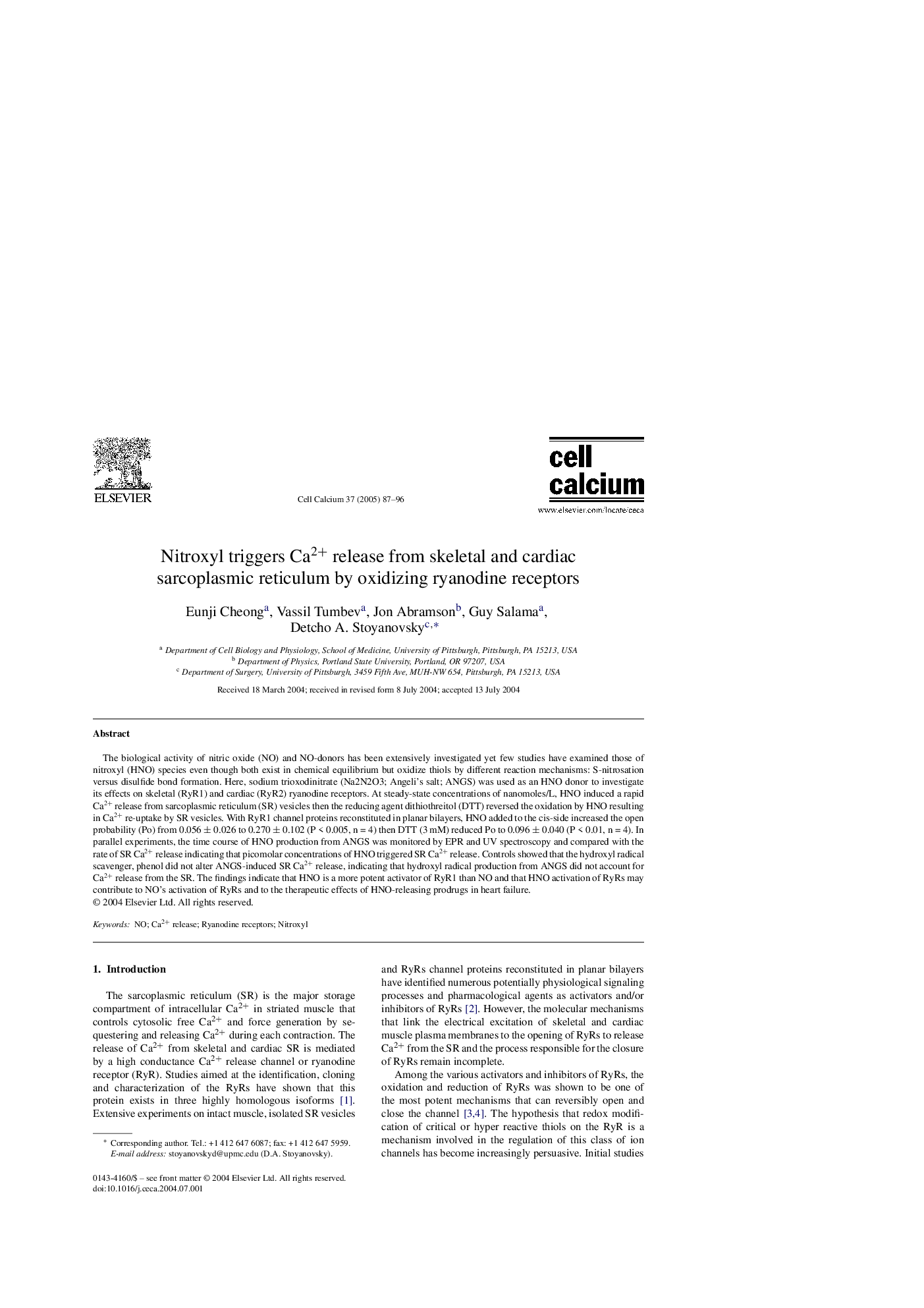| Article ID | Journal | Published Year | Pages | File Type |
|---|---|---|---|---|
| 10926533 | Cell Calcium | 2005 | 10 Pages |
Abstract
The biological activity of nitric oxide (NO) and NO-donors has been extensively investigated yet few studies have examined those of nitroxyl (HNO) species even though both exist in chemical equilibrium but oxidize thiols by different reaction mechanisms: S-nitrosation versus disulfide bond formation. Here, sodium trioxodinitrate (Na2N2O3; Angeli's salt; ANGS) was used as an HNO donor to investigate its effects on skeletal (RyR1) and cardiac (RyR2) ryanodine receptors. At steady-state concentrations of nanomoles/L, HNO induced a rapid Ca2+ release from sarcoplasmic reticulum (SR) vesicles then the reducing agent dithiothreitol (DTT) reversed the oxidation by HNO resulting in Ca2+ re-uptake by SR vesicles. With RyR1 channel proteins reconstituted in planar bilayers, HNO added to the cis-side increased the open probability (Po) from 0.056 ± 0.026 to 0.270 ± 0.102 (P < 0.005, n = 4) then DTT (3 mM) reduced Po to 0.096 ± 0.040 (P < 0.01, n = 4). In parallel experiments, the time course of HNO production from ANGS was monitored by EPR and UV spectroscopy and compared with the rate of SR Ca2+ release indicating that picomolar concentrations of HNO triggered SR Ca2+ release. Controls showed that the hydroxyl radical scavenger, phenol did not alter ANGS-induced SR Ca2+ release, indicating that hydroxyl radical production from ANGS did not account for Ca2+ release from the SR. The findings indicate that HNO is a more potent activator of RyR1 than NO and that HNO activation of RyRs may contribute to NO's activation of RyRs and to the therapeutic effects of HNO-releasing prodrugs in heart failure.
Related Topics
Life Sciences
Biochemistry, Genetics and Molecular Biology
Cell Biology
Authors
Eunji Cheong, Vassil Tumbev, Jon Abramson, Guy Salama, Detcho A. Stoyanovsky,
